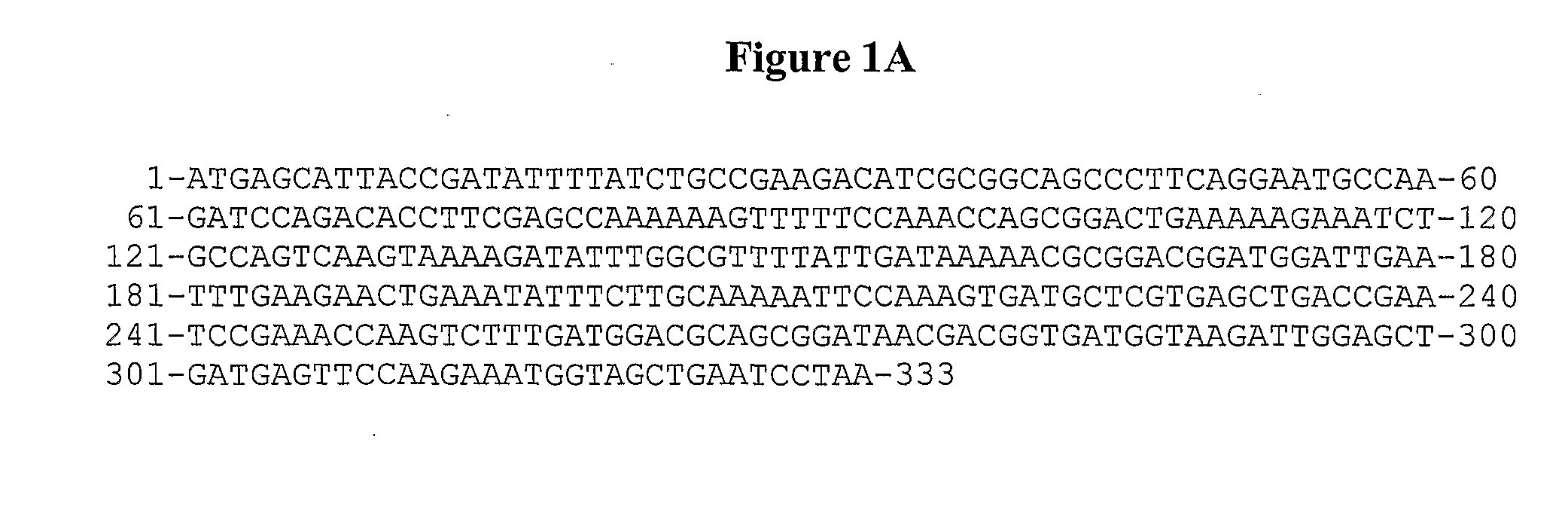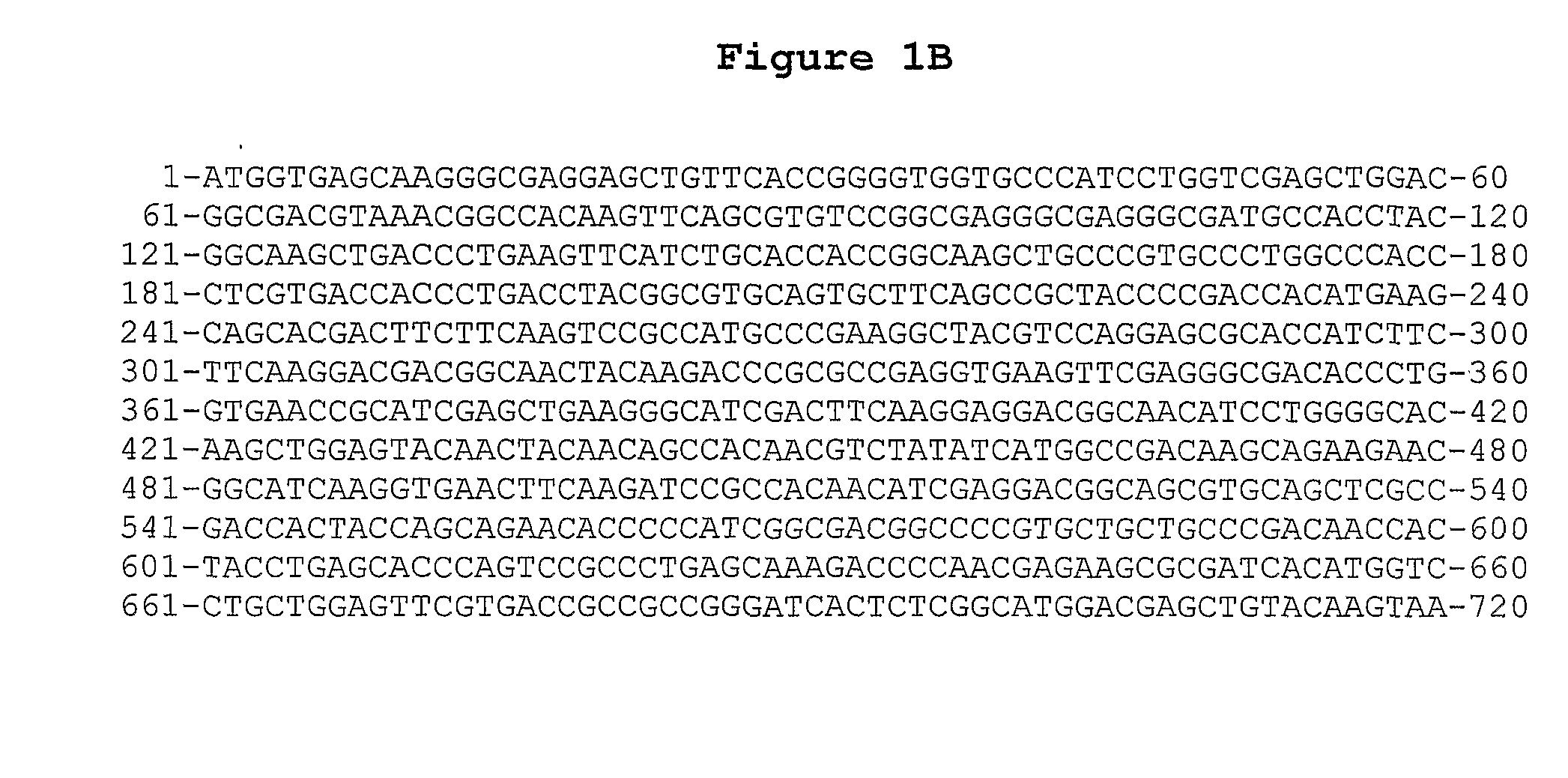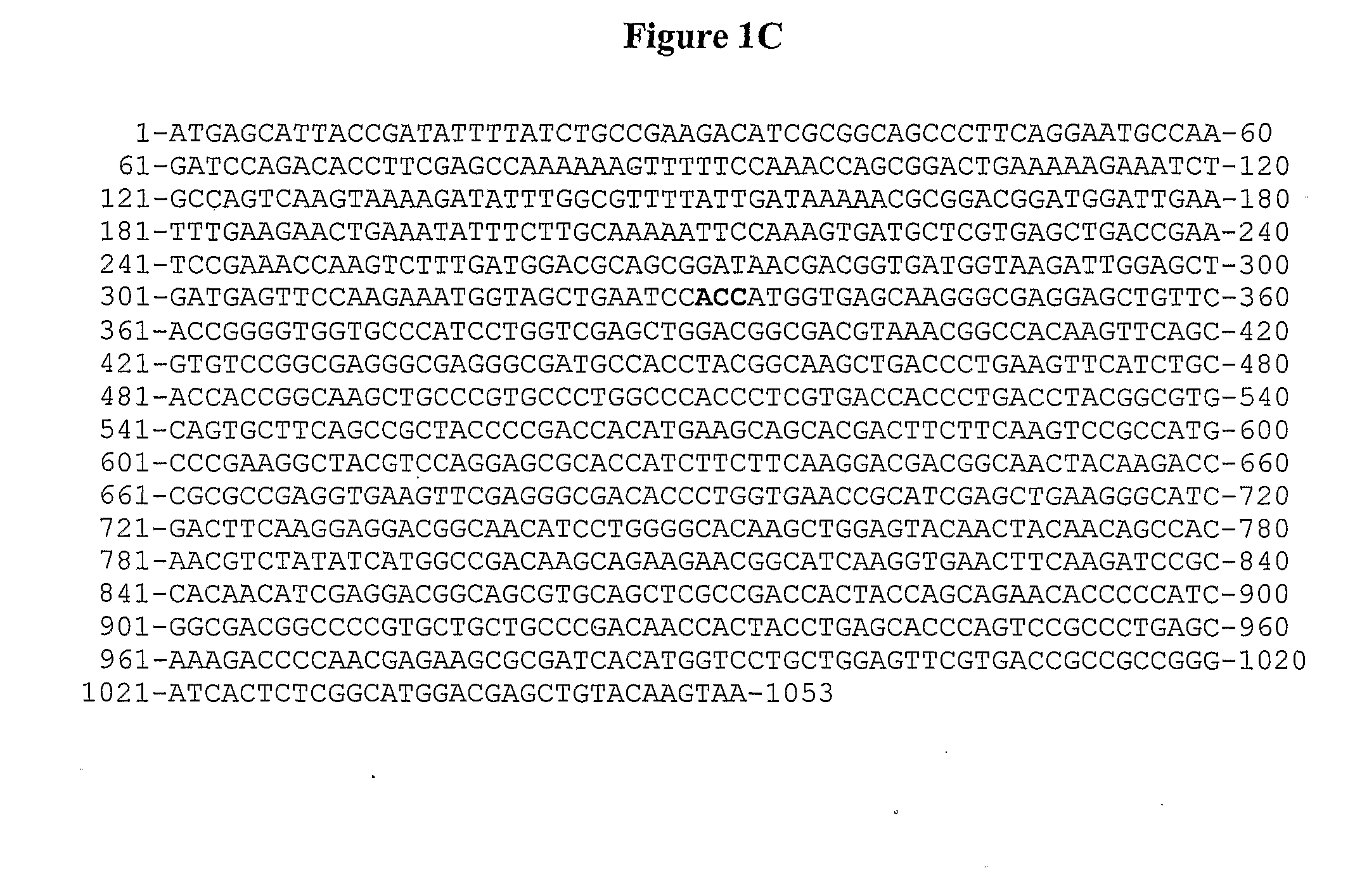Luminescent markers
a technology of luminescent markers and fluorescent dyes, applied in the field of luminescent proteins and nucleic acids, can solve the problems of generating an acceptable signal-to-noise ratio and the use of luminescent markers, and achieve the effect of enhancing luminescence and thermostability
- Summary
- Abstract
- Description
- Claims
- Application Information
AI Technical Summary
Benefits of technology
Problems solved by technology
Method used
Image
Examples
example 1
Materials and Methods
[0145]ptacTBF Construct
[0146]TBF is a variant of oncomodulin in which the CD loop has been modified to bind terbium (III) as well as calcium (II) and an extended C-terminus for greater stability. The gene was synthesized by Operon Technologies, Inc. CA and designed so the gene would be flanked by EcoR I Hind III restriction sites for excise into other plasmids.
[0147]The gene was cut from the vector supplied by Operon Technologies and inserted into the pKK223-3 plasmid (Amersham Pharmacia Biotech) to take advantage of its tac promoter and the strong rrnB ribosomal terminator which stabilizes the plasmid by inhibiting read-through transcription initiated by the tac promoter. To do this, the vector containing the TBF gene and the pKK223-3 plasmid were both treated with the EcoR I and Hind III restriction enzymes (MBI Fermentas) at 37° C. for 2 hours and then run on a 1% agarose gel in TBE buffer to separate the fragments. The DNA was extracted from the gel using Ul...
example 2
[0185]pTTE Construct
[0186]The pTTE construct was designed to insert the protein sequence recognized by the TEV protease between the TBF and EGFP proteins. This was accomplished by designing a primer containing the code for the TEV recognition sequence and glycines flanked on either side to ensure accessibility of the enzyme to cleave (FIG. 11). As with the pTBFEGFP construct, an amino aid linker, threonine was needed to ensure transcription remained in frame through to EGFP. The coding strand primer was the same used for designing the pTBFEGFP construct as this plasmid was used as the template. The anticoding strand was designed as follows, 5′-CGCGCCATGGTaccgccaccgccACCCTGAAAATACAAATTCTCgccaccgccaccGGATT CAGCTACCATTTCTTGGAACTCATCAGCTCCAATCTTACC-3′ (Nco I site is in bold, codes for glycine are in lower case and the code for the TEV recognition sequence is bold and underlined) (SEQ ID NO. 11).
[0187]Amplification of the gene, restriction digest of the gene and the vector, ligation and ...
PUM
 Login to View More
Login to View More Abstract
Description
Claims
Application Information
 Login to View More
Login to View More - R&D
- Intellectual Property
- Life Sciences
- Materials
- Tech Scout
- Unparalleled Data Quality
- Higher Quality Content
- 60% Fewer Hallucinations
Browse by: Latest US Patents, China's latest patents, Technical Efficacy Thesaurus, Application Domain, Technology Topic, Popular Technical Reports.
© 2025 PatSnap. All rights reserved.Legal|Privacy policy|Modern Slavery Act Transparency Statement|Sitemap|About US| Contact US: help@patsnap.com



